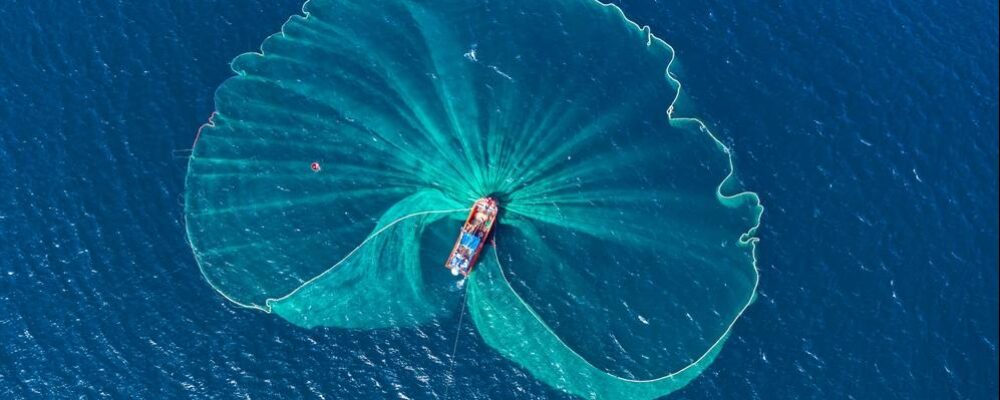The last two years have been a period of history with a multiplicity of conflicts. While the world has of course experienced conflicts before, we have not witnessed this many clashes with such high complexity since the fall of communism.
There are currently three sets of confrontations taking place in the Indo-Pacific region, which we can view as a triangle of conflicts in the periphery of Europe and Asia. Two of them are violent – the invasion of Ukraine by Russia and the ongoing fighting in the Middle East. Both have exerted an impact on trade and shipping costs. The third is a potential simmering conflict over Taiwan. An outright clash or even a blockade would dwarf the other two, and the global economy could face an estimated US$10 trillion hit.
All three conflicts have one thing in common. In each case, the West is backing a relatively small democratic regime against aggressive neighbours with authoritarian governments. The United States is a direct player only in the Middle East, but has assumed a key supporting role in both Ukraine and Taiwan. Meanwhile, the European Union has thrown its support behind Ukraine, recently overcoming the intransigence of Hungarian Prime Minister Viktor Orbán to announce a €50 billion aid package.
Countries on the rise
Although we often focus on the big players in the region – China, the US, Europe, Russia and perhaps Iran – other Asian countries can play a crucial part in either escalating or de-escalating these conflicts. Regional actors have their own incentives, histories and constraints. What are their core motivations? Do they have their own great power ambitions? And what alliance structure are they likely to join, if any?
Over the past couple of decades, China has been in the ascendancy, with the relative resource and power balance shifting in its favour. Now, look ahead a couple of decades more. We can expect the rise of even more regional power centres as countries such as India and Indonesia catch up. Therefore, it is important to acknowledge the multipolarity in the Indo-Pacific, not just today but also in the future.
Both the US and Europe have traditionally perceived competition in this region as bipolar, i.e. a conflict between the established power, the US, and rising power, China. But think ahead to the likes of India, Indonesia and Vietnam as they jettison their pacifist past. These countries want respect and acknowledgment from incumbent powers. They also want to remain free to make choices that best align with their own interests and values without overbearing pressure from others.
Furthermore, it is critical to distinguish between economic and security concerns. Many emerging players – including Southeast Asian countries, India and South Korea – have overlapping economic interests. They want trade with China, investment and tech transfers from the US and Europe and access to markets. But when it comes to security, there is divergence. Japan generally prioritises the East China Sea. India focuses on the Sino-Indian border and the Indian Ocean. Indonesia thinks primarily about the Natuna Islands and the South China Sea. Vietnam remains most worried about the Paracel Islands, the Philippines about the Spratly Islands and South Korea about the Korean Peninsula.
Countries still choosing their alignments deserve more attention than they have received thus far. If I were the US, Europe or China, I would pay more attention to the region’s states that have yet to make a clear alignment decision. But engaging players like Bangladesh, India, Indonesia, Malaysia, Vietnam and various Pacific Islands is no easy task. Quick wins with these actors are unlikely, but sustained engagement today can set the stage for realignment tomorrow. From this perspective, China’s territorial disputes with India, Indonesia, the Philippines, Vietnam and even Malaysia seem counterproductive.
There are three dimensions of influence incumbents can use to court these rising powers. The first is coercion to force compliance. The second is providing inducements and incentives for alliances. The third is legitimising the values they espouse. All big players are currently using some mix of the three.
The US has deployed the first and the third by projecting power and emphasising American exceptionalism. Europe, meanwhile, has mostly focused on the second and third, but the lack of unity between individual nations makes some countries sceptical of its future influence. Finally, through the Belt and Road Initiative and Asian Infrastructure Investment Bank, China initially concentrated on inducements. It then swung more towards coercion – think territorial disputes and wolf warrior diplomacy – and is now back to following an inducement strategy.
The importance of India
Today, political and business leaders are optimistic about India. In the geopolitical context, both the US and Europe view it as a bulwark against China and are doing all they can to court the country and its Prime Minister, Narendra Modi. India is unique, and it will play a crucial role in the Indo-Pacific region in the years to come.
In most places that experience economic liberalisation, we assume that political freedoms will follow – such as in the cases of South Korea and Taiwan. India has enjoyed far more political freedoms, but has historically held a pessimistic view of markets. It followed Nehruvian socialism for its first four decades, and even today has an aversion to joining free-trade agreements.
The country’s demographics skew young, with over half the population under 30 years of age, and the future growth rate looks to be high given that it began from a low base. Large infrastructure investments are also paying off. In addition, better policies are being established – including bankruptcy law, tax reform, the digitalisation of services and attempts to continue liberalising various sectors.
If there is one concern, it’s that India is not creating sufficient jobs. Despite the country’s comparative advantage in the services sector, it cannot afford to skip the manufacturing stage and move directly into this phase. The vast majority of India’s college and high school graduates lack the skills to be gainfully employed in services. Instead, they are now stuck in low-paying occupations in construction, the gig economy and restaurants.
A colonial hangover
Besides its economic challenges, India is also undergoing seismic political and cultural shifts. It is difficult to understand the country without considering its history of colonisation and decolonisation. The British left India in 1947. But India continued to be ruled by a tiny Westernised elite – epitomised by former Prime Minister Jawaharlal Nehru – whose worldviews, lifestyles and aspirations were closer to that of the colonial rulers than those they ruled.
Ordinary Indians saw that their gap with the elites was not closing, nor could they envision bright prospects for their future. Only those who attended good Eurocentric schools in cities and learned English could succeed in life through securing jobs in the civil sector and later in the private sector. Meanwhile, public education was of abysmal quality. The legal and administrative system was also grounded in English common law.
This colonial hangover led to the quiet collective humiliation and alienation of many Indians, who felt inadequate and inferior for not being sufficiently Westernised. This opened the door for the Bharatiya Janata Party, which pushed for restoring Indian pride.
Modi understands this instinctively. After his inauguration in 2014, he chose to address the United Nations General Assembly in Hindi. The elites mocked him, but it was an astute choice. Modhi has always been well aware of the power of symbols. He’s unveiled giant statues of freedom fighters who fought violent campaigns against the British, inaugurated a new Parliament building and, just last month, opened the Ram temple in Ayodhya.
Any big powers who interact with India should keep this legacy and cultural shift foremost in their minds. Ironically, China, despite its adversarial relations with India, has a similar history of humiliation under colonial occupation and therefore instinctively understands this.
India is generally perceived as a weak link in the Quad (the US, Australia, Japan and India) – a less reliable actor that isn’t allied with the positions of the other members on key issues like Ukraine, North Korea and even human rights in Myanmar. It is reluctant to deepen defence cooperation, and instead wants the Quad to take a larger role in terms of health crisis management, including vaccine development. Moreover, India does not want to give up its autonomy and flexibility in partnering with others, such as the newly enlarged BRICS.
India has its own economic and global power ambitions and is naturally suspicious of superpowers. Courting it is no easy task. Indo-Pacific nations that want the country as part of their alliance structure would do well to remain patient and take a long-term approach.
These remarks were delivered during the panel “Identifying Key Players in the Indo-Pacific”, part of the Singapore Economic Forum held at INSEAD Asia Campus on 25 and 26 January, 2024. The session was moderated by Emmanuelle Auriol (Le Cercle des économistes). Other speakers were Thomas Friedberger (Tikehau Capital) and Wang Huiyao (Center for China and Globalization).
“INSEAD, a contraction of “Institut Européen d’Administration des Affaires” is a non-profit graduate-only business school that maintains campuses in Europe, Asia, the Middle East, and North America.”
Please visit the firm link to site






